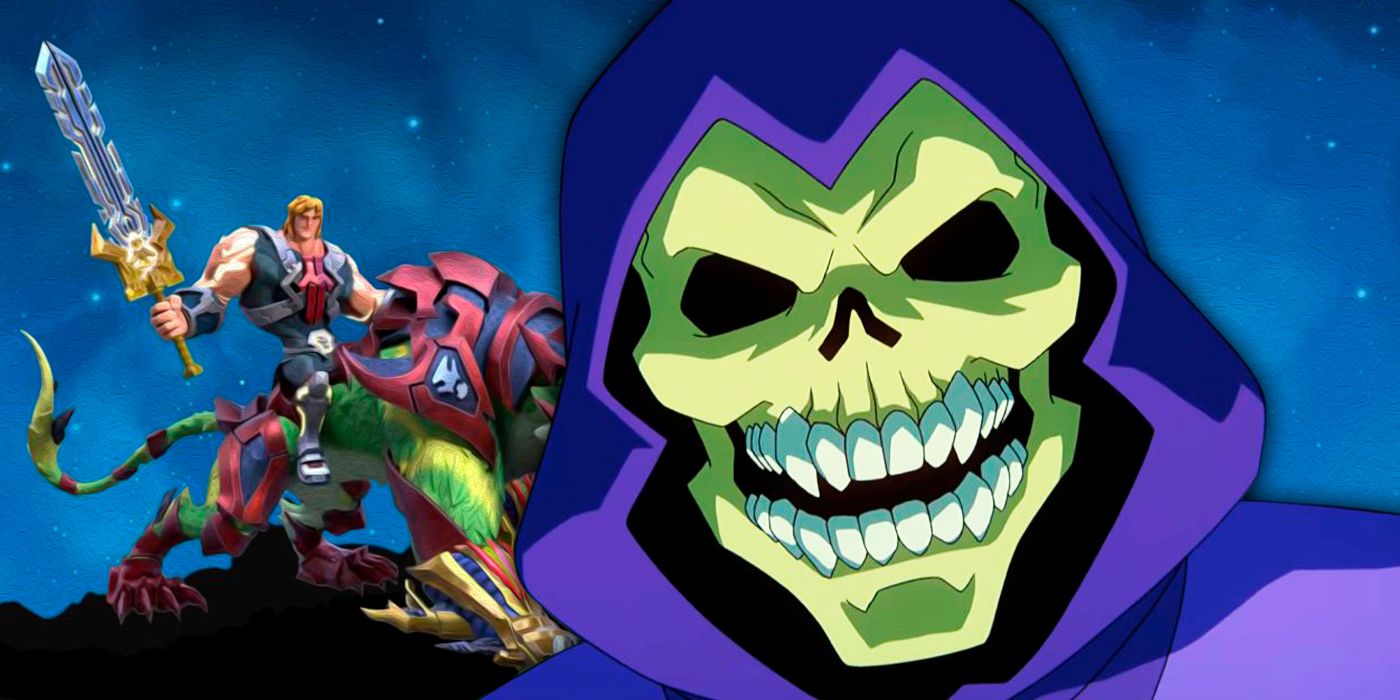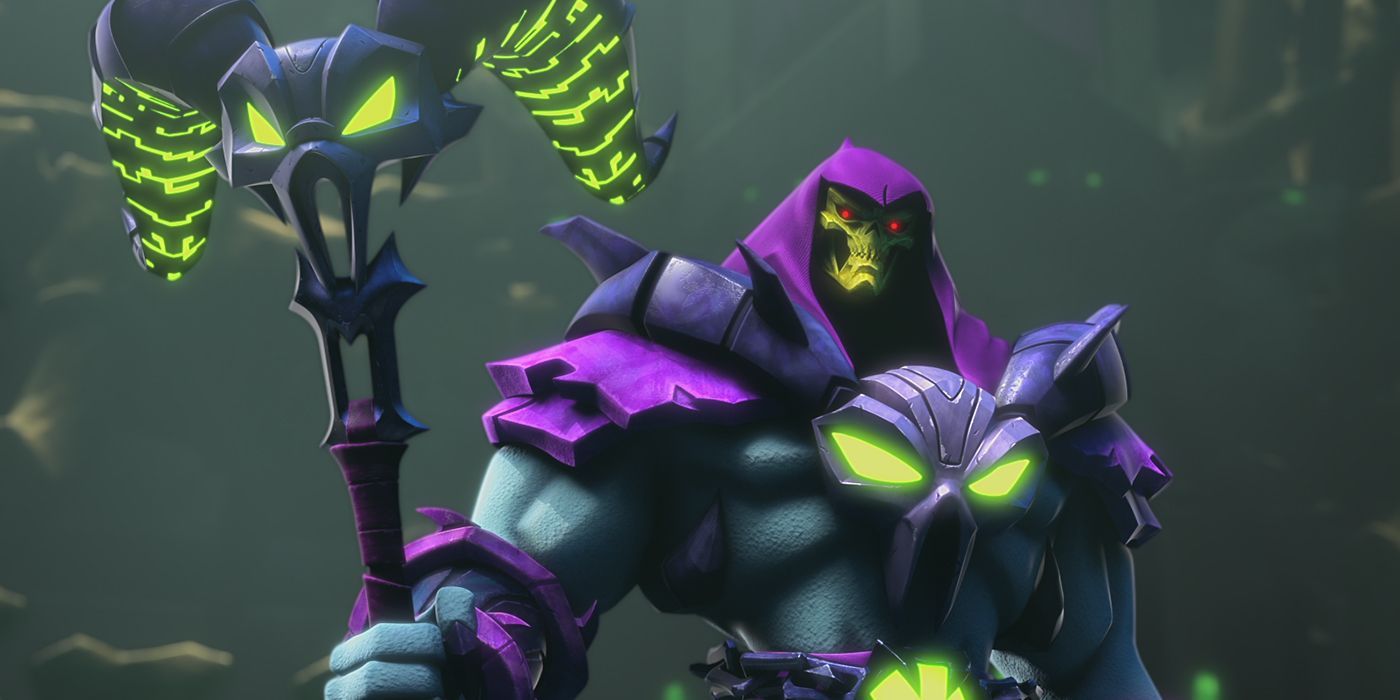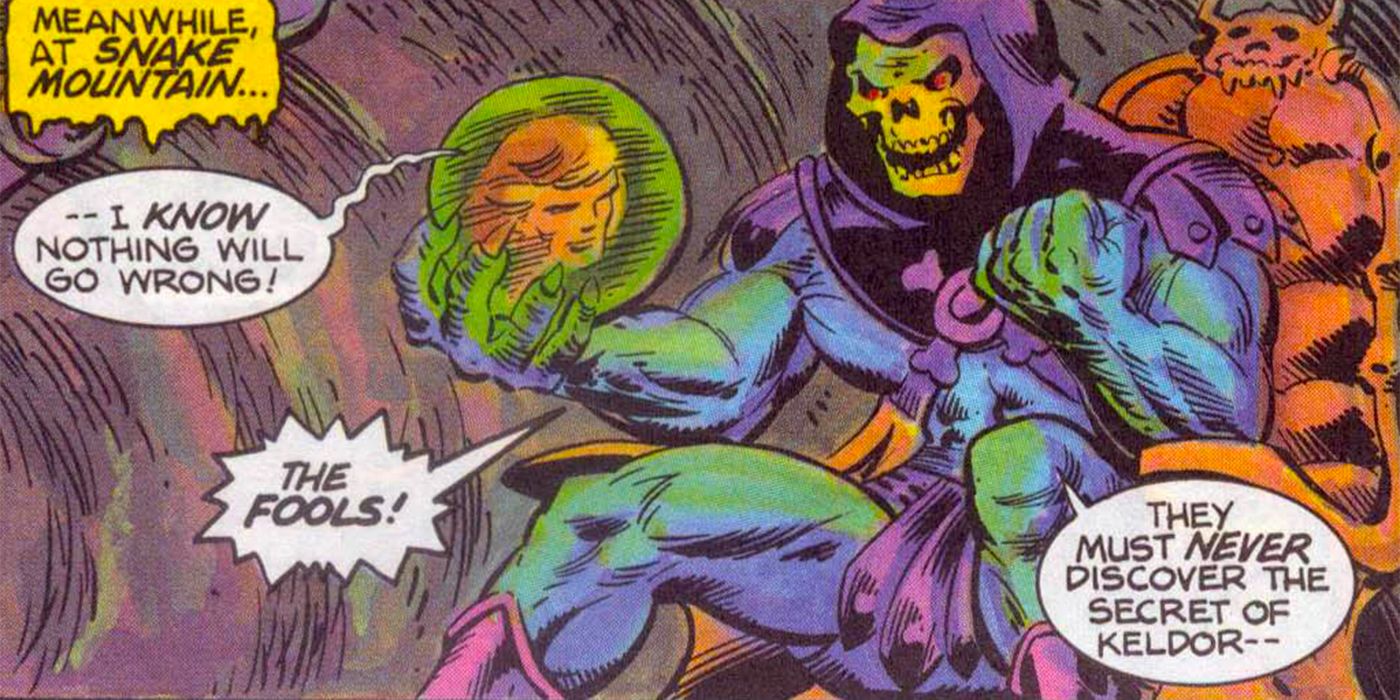WARNING: The following contains spoilers for Season 1 of He-Man and the Masters of the Universe, now streaming on Netflix.
Netflix's new He-Man and the Masters of the Universe series is the first real re-imagining of the franchise in a while, wholly rebooting the story to give it a fresh take for a new generation. Despite this more modern look and CGI animation, the show still takes quite a bit from old-school versions of the classic character, including how it handles He-Man's infernal nemesis, Skeletor.
With ties to a past identity relating to He-Man, Skeletor's origin in the new series is actually pulled from the old series' comic books. This cements Skeletor's origin, giving the villain a definite backstory as opposed to the many contradictory continuities of the past. Here's how the newest version of He-Man's arch-nemesis pulls from a more classic incarnation.
Skeletor's Origin in Netflix's He-Man and the Masters of the Universe Reboot
In the 2021 Netflix reboot of He-Man and the Masters of the Universe, Skeletor's origin reveals that he's, in fact, none other than the former Prince Keldor. The younger brother of Eternia's King Randor, Keldor is Prince Adam's uncle, a fact that's made clear even in the show's first trailer.
This trailer showed an image of Keldor's original human form before being superimposed with the evil Skeletor's visage. This changes the entire dynamic between Skeletor and He-Man going forward, as it's obvious from the start that the two share a familial link. Some fans may be scratching their heads at this seeming change, but this backstory is actually almost as old as the franchise itself.
A 1987 He-Man Minicomic First Hinted Keldor Became Skeletor
The original minicomics for the series' toyline and even the classic Funimation cartoon of Masters of the Universe failed to delve into much of Skeletor's backstory or why he looked the way he did. The most that these contradictory mediums did was state Skeletor was either an extra-dimensional invader to Eternia or a dark magic-using disciple of Hordak. However, a 1987 minicomic, "The Search for Keldor," finally hinted at the backstory of He-Man's arch-nemesis.
The story centers on King Randor's attempt to discover what happened to his brother Keldor, who had gone missing after trying to master magic. Skeletor vows to stop the search, believing the truth behind Keldor could destroy him. The ensuing fight with He-Man allows Skeletor to prevent the opening of a dimensional doorway, which keeps Keldor's fate a secret for at least a while longer. The insinuation, however, was that Keldor became Skeletor, something that would have been confirmed in later minicomics if the toyline continued.
This idea was used in the 2002's He-Man and the Masters of the Universe reboot, in which a heavily scarred Keldor was turned into Skeletor. That series removed the connection to King Randor, but a later Classics toyline backstory revealed Skeletor was the result of Keldor being fused by Hordak with the Demo-Man. Thus, the "new" origin of the CGI Netflix reboot isn't new at all, but an adaptation of Skeletor's most recurring origin. This consistency helps to make said origin the official one, finally providing some line-wide clarity as to where Eternia's greatest threat came from.
To see Skeletor's origin story, He-Man and the Masters of the Universe is now available on Netflix.



